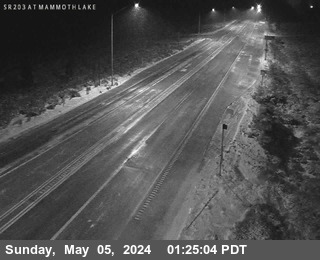Brought to you by Howard Sheckter
Archive for August, 2013
Dry weather expected again Today and Saturday with moisture on the increase Sunday into Monday. Some stronger breezes Sunday PM and Monday…..The chance of measurable precipitation increases to 30% by Sunday into Monday……Drier air will move back into our area by Mid week with just a Slight Chance of TSRWs….
Friday August 30, 2013
Saturday Evening Update:
PM 10 Count hit 175 PPM at 6:00pm Saturday. (Unhealthy) Make sure you keep windows closed and keep indoors.
Latest on Rim Fire:
Rim Fire Fact Sheet
31 August 2013
Day 15
Acreage: 219,277
Largest fire in the United States to date in 2013·
No. 1-ranked on national firefighting priority list
Fifth largest fire in California history
·Second largest to date in 2013: Lime Hills Fire, Alaska 201,809 acres
Personnel currently on incident:4,995
States that have sent firefighters or other personnel: 41 and the District of Columbia
Cal Fire geographical units that have sent personnel: 20 of 21
Uncontrolled fire edge: 107.4 miles
Completed containment line: 66.1 miles
Completed dozer line: 139.9 miles Proposed dozer line: 30.3 miles
Completed hand line: 5 miles Road as completed line: 16.3 miles.
Acreage in Stanislas National Forest: 156,185
Proportion of the fire burning within Stanislaus National Forest: 71.2 percent
Acreage in Yosemite National Park: 60,185
Proportion of the fire burning in Yosemite National Park: 27.5 percent
Acreage of state and private property: 2,907
Proportion of the fire burning on state and private property: 1.3 percent
Proportion of the Stanislaus National Forest within the fire perimeter: 17.4 percent
Proportion of Yosemite National Park within the fire perimeter: 7.9 percent
Size of the fire area:
Larger than the land area of San Francisco, Oakland and San Jose combined
Pounds of firefighter laundry washed:
10,534
Burned or damaged trees adjacent to power lines removed by Pacific Gas and Electric:
4,929
Quick Saturday AM Update
A wind shift from the west has brought the southern boundary of smoke from the Rim Fire into the Mammoth area over night. Visibilities were about 7 miles this morning. The PM 10 count jumped from 20 parts per million yesterday to briefly 120 parts per million about 1:00am this morning. By 7:00am this morning the PM 10 count was back down to 60 PPM. Westerly flow is expected to continue today and possibly into Sunday and thus so will the smoke. However. the upper flow is expected to back more to the south Sunday and thus push the smoke boundary back to our north as the day progresses. Labor Day looks clear of smoke. Lets hope that varifys….
Dew points are very high in Southern Ca as deep tropical moisture lay to our south. The southerly flow is expected to pick up that moisture for an increasing chance of thunderstorms Sunday into Monday. Temperatures will be dependent upon cloud cover. Expect high 70s today low 70s Sunday and Monday. lows at night in the low 50s.
Fair, dry warmer weather is expected to develop by Wednesday or Thursday.
More later…………………………………>>>>>>
The Dweeber……………………:-)
Friday AM Update:
RIME FIRE:
Acres Burned: 201,894 (315 square miles)
Structures Threatened: 4,500
Containment: 32%
Residences Destroyed: 11
Fire Start Date: August 17, 2013
Commercial Property Destroyed: 3
Fire Cause: Under Investigation
Outbuildings Destroyed: 97
Cost to date: $47 million
Injuries: 4
Total Personnel: 4,931
Weather Discussion and Summery: Temps in the mid to upper 70s this weekend for Mammoth with Lows in the upper 40s and low 50s.
Over the next couple of days high pressure aloft will sit over the plains states while Trofing persists off the pacific northwest coast. Thus the upper flow will continue to be channeled from the southwest (Dry). This persistent pattern should continue another day or two before the upper flow back a bit toward the south and an upper jet approaches. The pattern is dry here in Mammoth with Southwest winds continuing to carry dense smoke up into the northern portions of Mono County. Areas like Coleville will continue to be especially effected both day and night. Winds will be lighter today and so the smoke will be even more of a problem today and tonight up to the north of us.
By this weekend, the upper low in the pacific northwest will progress toward the northwest coast Sunday. This will bring an increase of zephyr winds Sunday and Monday to our area with gusts to 30 MPH possible. In addition….Amplification will allow monsoon moisture to spread north as well. Then there is that Rt Rear Entry region of the upper beginning to impact the 1/2 Northern CA Late Sunday and especially Monday. The chance of thunderstorm’s will increase Sunday PM and Monday. Hopefully they will be wet rather then just high based with just mainly lighting….
By the middle of next week the GFS shows enough WSW flow behind the upper Trof to bring enough dry air into our region to take out any threat of thunderstorms. It continues to be the most progressive. The ECMWF weakens it and still leaves enough subtropical moisture over the central and southern sierra Mid Week. Taking the middle road…the Dweebs are calling for a slight chance of thunderstorm’s Wednesday and Thursday here in the Mammoth Area.
There will be a WX Update for Mono County Sunday morning….




